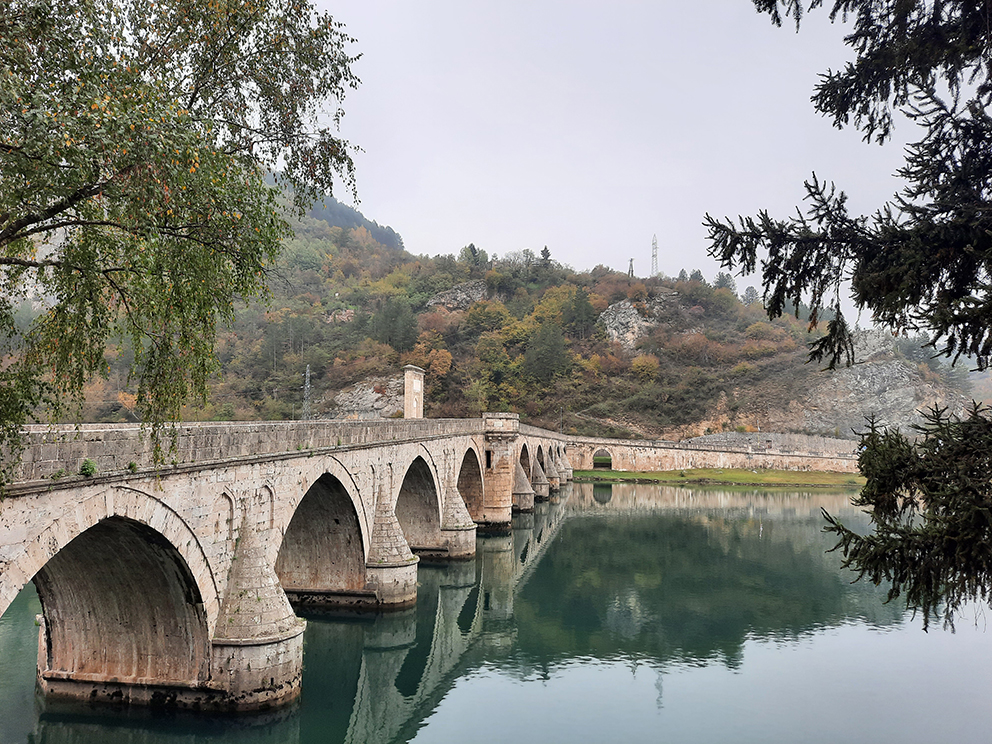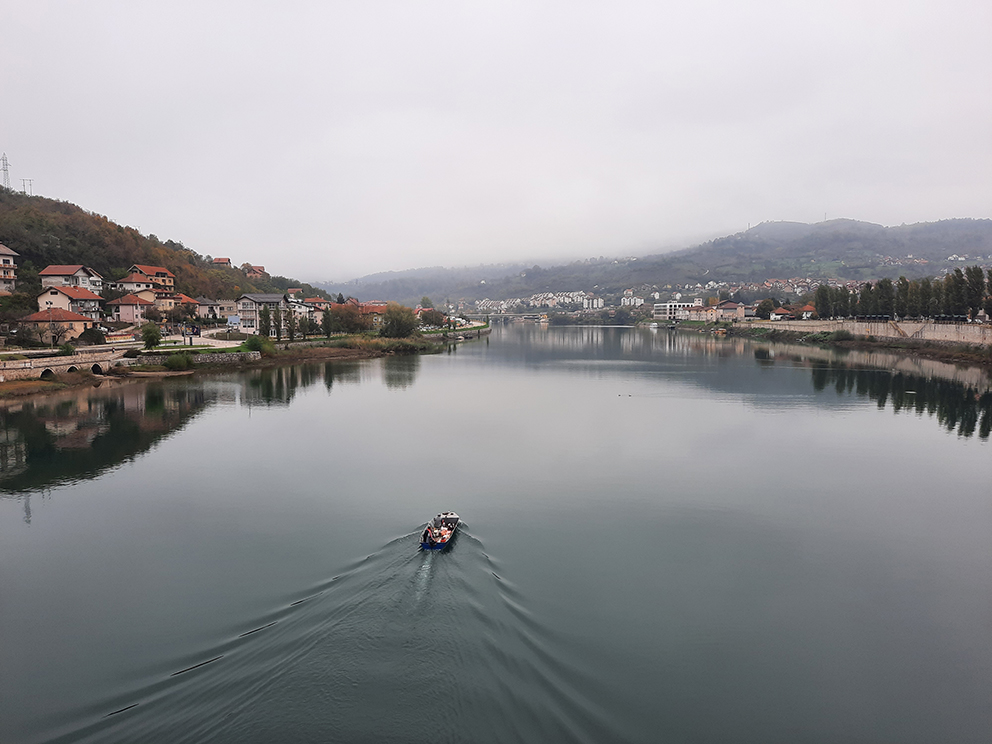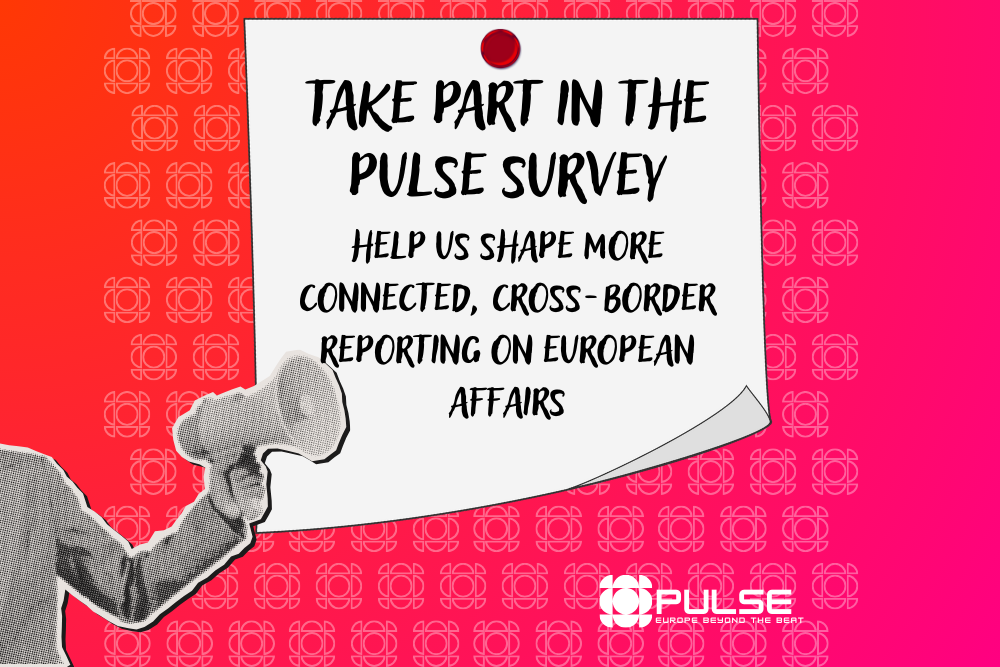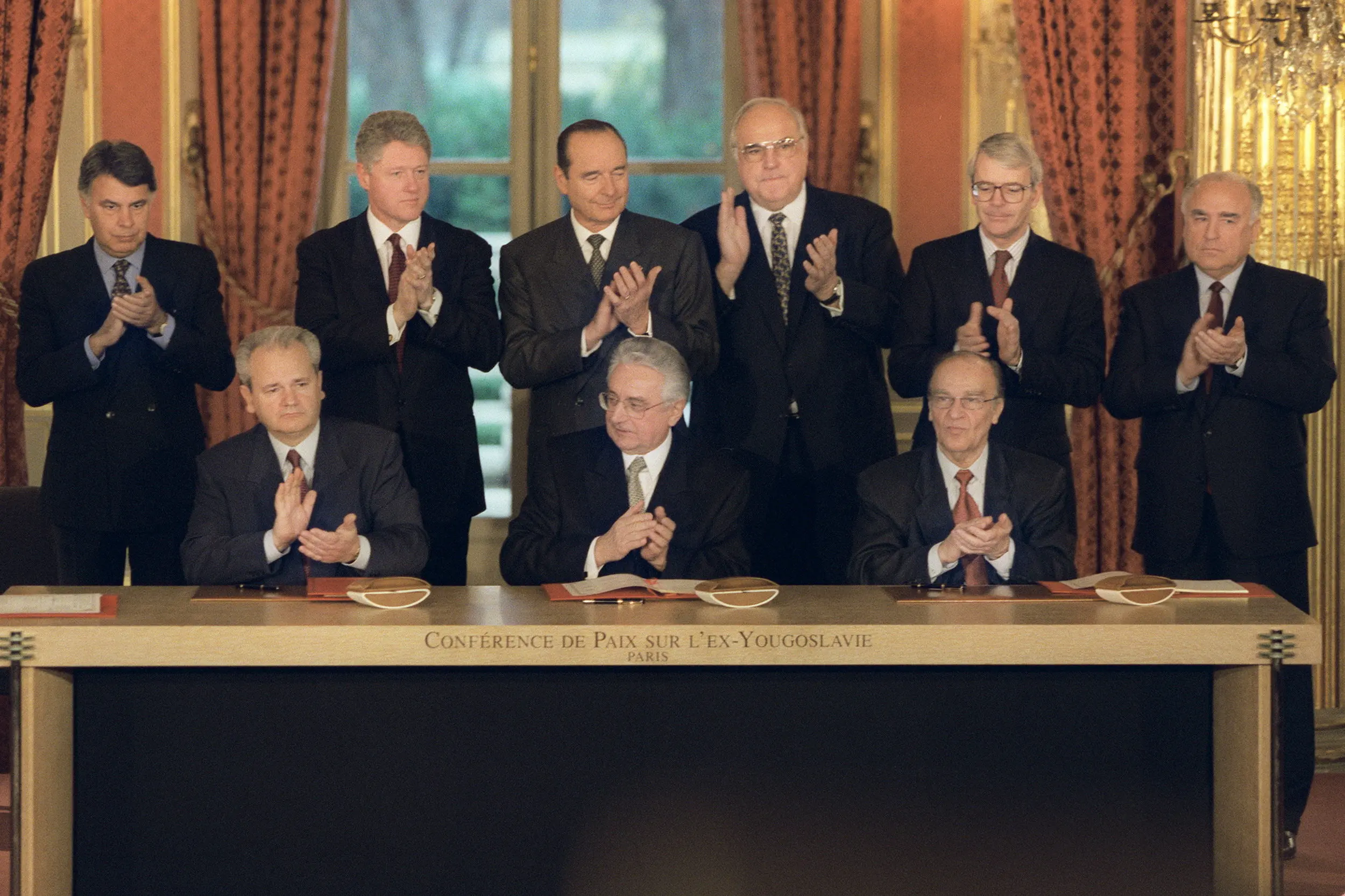Bosnia and Herzegovina, the faces of the Drina
Known for its presence in famous novels, such as that of Nobel Prize winner Ivo Andrić, and remembered for the war crimes perpetrated on its banks: the Drina is certainly one of the most important and praised rivers in Bosnia and Herzegovina. The story of the Drina in this reportage

Bosnia-Erzegovina-i-volti-della-Drina
The bridge on the Drina in Višegrad, Bosnia and Herzegovina (photo G. Vale)
“For the greater part of its course the river Drina flows through narrow gorges between steep mountains or through deep ravines with precipitous banks. In a few places only the river banks spread out to form valleys with level or rolling stretches of fertile land suitable for cultivation and settlement on both sides”.
When thinking about the Drina River, many people’s first association is with Ivo Andrić’s most famous novel, the incipit of which is quoted above. The Bridge on the Drina, published in 1945, takes place at a precise point along the watercourse, the town of Višegrad, where “the Drina flows with the whole force of its green and foamy waters from the apparently closed mass of the dark steep mountains” and where “stands a great clean-cut stone bridge with eleven wide sweeping arches”.
When I began my research for this third part of the series “Narrating the Balkans from the Rivers” (after the Neretva and the Kupa), I asked many of my interlocutors what their first association was with the Drina River.
The name of Ivo Andrić, winner of the Nobel Prize for Literature in 1961, has often come up in conversations, sometimes accompanied by a completely different and much darker topic: war crimes committed in the 1990s.
Bijeljina, Zvornik, Bratunac, Višegrad, Foča… these are just some of the places along the Drina that were the scene of terrible massacres at the beginning of the war in Bosnia and Herzegovina. And they are not even the most famous. Goražde, also along the river, suffered a fate similar to that of Sarajevo, besieged by Serbian troops from 1992 to 1995, while Srebrenica, which will forever be associated with the genocide of the summer of 1995, is located only ten kilometers from the river.
“I belong to the generation born just before the war. I was ten years old when the conflict ended. I attended school after the war, followed the work of the courts, read the documentation… Unfortunately for me, the Drina is still synonymous with war crimes”, political analyst Adi Ćerimagić from the European Stability Initiative (ESI) once told me.
“The Drina is also a symbol in the region. For Serbian nationalism, it is the border that separates two parts that want to unite”, explains Ćerimagić, and asks: “Will we ever be able to realise the idea of Enlargement and transform the Drina from a border and a symbolic place linked to war crimes into a simple river between two member states of the European Union?”.
The Many Faces of the Drina
From its source on the border between Bosnia and Herzegovina and Montenegro, where the Tara and Piva rivers merge, the Drina flows for almost 350 kilometers, marking most of the border between Serbia and Bosnia and Herzegovina (more precisely Republika Srpska, except for the short stretch Ustikolina-Goražde which is in the Federation of Bosnia and Herzegovina), before flowing into the Sava in the Vojvodina plain.
As Andrić writes, for a large part of its course the Drina is almost inaccessible. It appears suddenly behind a bend, squeezed between two steep, forested hills, then disappears again until the next vidikovac, or lookout. In the densest coniferous areas, such as the one near the Tara mountain and national park (Serbia), the Drina does not make a sound before 10 am, even in summer shrouded in a thick blanket of fog.
But the Drina is also a “mass of water, green and foamy” along which, especially in the upper part, numerous rafting centers have sprung up in recent years. This adrenaline tourism is the gateway to the Balkans for an increasing number of travelers and a starting point for discovering the region, also a significant source of income for an economically depressed area like that of the Republika Srpska.
Further downstream, the Drina widens and on its banks, which are now in two different states, small villas often equipped with a tiny dock appear. It is in this area that the river becomes a resource for builders who come here to look for sand, even illegally. Environmentalists oppose not only this practice, but also some much larger lithium mining projects on both banks. The village of Gornje Nedeljice, in Serbia, where a huge Rio Tinto mine is planned, is located twelve kilometers from the river.
Finally, the Drina is not just a watercourse. Until a few years ago, it was also a historic brand of cigarettes, produced by the Sarajevo Tobacco Factory. The plant – one of the first to be inaugurated in the late 19th century during the Habsburg administration of Bosnia – was shut down in the spring of 2022.
The Drina (almost) marks a linguistic border between ijekavica and ekavica, the two main pronunciations of Serbo-Croatian. “The difference between the two dialects has been evident since the 15th century”, explains linguist Boban Arsenijević from the University of Graz, “today the border between ijekavica and ekavica, although not perfectly, largely coincides with the Drina. However, the line is moving and in the future ekavica is expected to cross the watercourse to reach the other bank”.
Straighten the Drina
“When The Bridge on the Drina was published in 1945, Ivo Andrić sent a copy to his friend and writer Marko Marković [author of the book Kriva Drina (The Crooked Drina) ed.], with the following dedication: ‘All the Drinas of this world are crooked, they will never be fully and completely straightened, but we must never stop straightening them’”, explains Enes Škrgo, curator of the Memorial House of Ivo Andrić in Travnik.
The aforementioned dedication has been interpreted in many ways, as has often happened with everything related to the great Bosnian writer, but for Enes Škrgo, who has been studying the life and works of Andrić for years, the sentence has only one meaning. “There are many injustices, difficulties and nonsence in this world, but that should not make us give up on our mission, our personal journey to contribute to a better life”, says Škrgo.
Almost hidden in the heart of the Balkans, the Drina is at the very heart of many stories. We will discover some of them during a journey that will take us from the river’s source on the Bosnian-Montenegrin border to its confluence with the Sava. We will talk about wars and linguistics, sports and lithium, literature and empires. Besides the darkest and most sinister events, there will certainly be no shortage of stories of humanity, encounters and the personal experiences of those who, despite everything, still do not give up trying to straighten the Drinas of the world.
The next meeting is at the confluence of the Tara and Piva rivers.
This publication has been produced within the Collaborative and Investigative Journalism Initiative (CIJI ), a project co-funded by the European Commission. The contents of this publication are the sole responsibility of Osservatorio Balcani Caucaso Transeuropa and do not reflect the views of the European Union. Go to the project page
Tag: CIJI
Featured articles
- Take part in the survey
Bosnia and Herzegovina, the faces of the Drina
Known for its presence in famous novels, such as that of Nobel Prize winner Ivo Andrić, and remembered for the war crimes perpetrated on its banks: the Drina is certainly one of the most important and praised rivers in Bosnia and Herzegovina. The story of the Drina in this reportage

Bosnia-Erzegovina-i-volti-della-Drina
The bridge on the Drina in Višegrad, Bosnia and Herzegovina (photo G. Vale)
“For the greater part of its course the river Drina flows through narrow gorges between steep mountains or through deep ravines with precipitous banks. In a few places only the river banks spread out to form valleys with level or rolling stretches of fertile land suitable for cultivation and settlement on both sides”.
When thinking about the Drina River, many people’s first association is with Ivo Andrić’s most famous novel, the incipit of which is quoted above. The Bridge on the Drina, published in 1945, takes place at a precise point along the watercourse, the town of Višegrad, where “the Drina flows with the whole force of its green and foamy waters from the apparently closed mass of the dark steep mountains” and where “stands a great clean-cut stone bridge with eleven wide sweeping arches”.
When I began my research for this third part of the series “Narrating the Balkans from the Rivers” (after the Neretva and the Kupa), I asked many of my interlocutors what their first association was with the Drina River.
The name of Ivo Andrić, winner of the Nobel Prize for Literature in 1961, has often come up in conversations, sometimes accompanied by a completely different and much darker topic: war crimes committed in the 1990s.
Bijeljina, Zvornik, Bratunac, Višegrad, Foča… these are just some of the places along the Drina that were the scene of terrible massacres at the beginning of the war in Bosnia and Herzegovina. And they are not even the most famous. Goražde, also along the river, suffered a fate similar to that of Sarajevo, besieged by Serbian troops from 1992 to 1995, while Srebrenica, which will forever be associated with the genocide of the summer of 1995, is located only ten kilometers from the river.
“I belong to the generation born just before the war. I was ten years old when the conflict ended. I attended school after the war, followed the work of the courts, read the documentation… Unfortunately for me, the Drina is still synonymous with war crimes”, political analyst Adi Ćerimagić from the European Stability Initiative (ESI) once told me.
“The Drina is also a symbol in the region. For Serbian nationalism, it is the border that separates two parts that want to unite”, explains Ćerimagić, and asks: “Will we ever be able to realise the idea of Enlargement and transform the Drina from a border and a symbolic place linked to war crimes into a simple river between two member states of the European Union?”.
The Many Faces of the Drina
From its source on the border between Bosnia and Herzegovina and Montenegro, where the Tara and Piva rivers merge, the Drina flows for almost 350 kilometers, marking most of the border between Serbia and Bosnia and Herzegovina (more precisely Republika Srpska, except for the short stretch Ustikolina-Goražde which is in the Federation of Bosnia and Herzegovina), before flowing into the Sava in the Vojvodina plain.
As Andrić writes, for a large part of its course the Drina is almost inaccessible. It appears suddenly behind a bend, squeezed between two steep, forested hills, then disappears again until the next vidikovac, or lookout. In the densest coniferous areas, such as the one near the Tara mountain and national park (Serbia), the Drina does not make a sound before 10 am, even in summer shrouded in a thick blanket of fog.
But the Drina is also a “mass of water, green and foamy” along which, especially in the upper part, numerous rafting centers have sprung up in recent years. This adrenaline tourism is the gateway to the Balkans for an increasing number of travelers and a starting point for discovering the region, also a significant source of income for an economically depressed area like that of the Republika Srpska.
Further downstream, the Drina widens and on its banks, which are now in two different states, small villas often equipped with a tiny dock appear. It is in this area that the river becomes a resource for builders who come here to look for sand, even illegally. Environmentalists oppose not only this practice, but also some much larger lithium mining projects on both banks. The village of Gornje Nedeljice, in Serbia, where a huge Rio Tinto mine is planned, is located twelve kilometers from the river.
Finally, the Drina is not just a watercourse. Until a few years ago, it was also a historic brand of cigarettes, produced by the Sarajevo Tobacco Factory. The plant – one of the first to be inaugurated in the late 19th century during the Habsburg administration of Bosnia – was shut down in the spring of 2022.
The Drina (almost) marks a linguistic border between ijekavica and ekavica, the two main pronunciations of Serbo-Croatian. “The difference between the two dialects has been evident since the 15th century”, explains linguist Boban Arsenijević from the University of Graz, “today the border between ijekavica and ekavica, although not perfectly, largely coincides with the Drina. However, the line is moving and in the future ekavica is expected to cross the watercourse to reach the other bank”.
Straighten the Drina
“When The Bridge on the Drina was published in 1945, Ivo Andrić sent a copy to his friend and writer Marko Marković [author of the book Kriva Drina (The Crooked Drina) ed.], with the following dedication: ‘All the Drinas of this world are crooked, they will never be fully and completely straightened, but we must never stop straightening them’”, explains Enes Škrgo, curator of the Memorial House of Ivo Andrić in Travnik.
The aforementioned dedication has been interpreted in many ways, as has often happened with everything related to the great Bosnian writer, but for Enes Škrgo, who has been studying the life and works of Andrić for years, the sentence has only one meaning. “There are many injustices, difficulties and nonsence in this world, but that should not make us give up on our mission, our personal journey to contribute to a better life”, says Škrgo.
Almost hidden in the heart of the Balkans, the Drina is at the very heart of many stories. We will discover some of them during a journey that will take us from the river’s source on the Bosnian-Montenegrin border to its confluence with the Sava. We will talk about wars and linguistics, sports and lithium, literature and empires. Besides the darkest and most sinister events, there will certainly be no shortage of stories of humanity, encounters and the personal experiences of those who, despite everything, still do not give up trying to straighten the Drinas of the world.
The next meeting is at the confluence of the Tara and Piva rivers.
This publication has been produced within the Collaborative and Investigative Journalism Initiative (CIJI ), a project co-funded by the European Commission. The contents of this publication are the sole responsibility of Osservatorio Balcani Caucaso Transeuropa and do not reflect the views of the European Union. Go to the project page
Tag: CIJI











